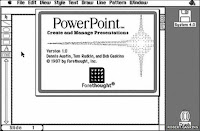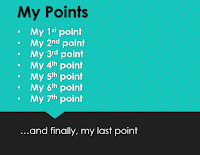 This is the third time I am using Chris Brogan's "My Three Words" exercise to help achieve my goals for next year.
This is the third time I am using Chris Brogan's "My Three Words" exercise to help achieve my goals for next year.Here is how it works: in late December, you select three words to direct your actions and behaviours that are aligned with you goals. They are reviewed regularly throughout the year, especially when making decisions that impact how you spend your time.
The words help you keep your goals top-of-mind and on track, increasing the odds of achieving them. As Chris says, "If you learn to use these words, learn to focus with them, learn to point yourself in the right direction with them, you'll see improvements. You'll see growth. You'll see a lot that makes you feel good."
 My 2015 words were Choiceful; New; and Flexible.
My 2015 words were Choiceful; New; and Flexible.Choiceful was about being selective on what I agreed to do. My past behaviour was to say yes to everything, which left me over-committed at the end of 2014. The impact of my decisions (or lack of them) was a 24-7 life just to honour the commitments I had made. Being choiceful helped me assess the pros and cons of opportunities and my available time before responding to requests. Now I have a disciplined decision-making process to help me be more choiceful.
New was intended to expose me to different opportunities and avoid falling into old patterns. In 2015, I took on new types of speaking engagements and consulting assignments, which led to personal growth. I even traveled to a couple of new countries for work, which broadened me further. My biggest new accomplishment was publishing my dad's memoirs on Amazon. Through the process, I developed a new skill set I will use in the future.
Flexible referred to my schedule. I was determined to leave room for unanticipated requirements and opportunities. I maintained a buffer of time over the second half of the year that I allocated depending on my priorities. I was more productive and less stressed by doing so.
 My three words for 2016 are: Excite; Create and Focus.
My three words for 2016 are: Excite; Create and Focus.Excite has two meanings: find excitement in everything I do and excite the people I work with to accomplish new and challenging goals. They are related yet will help me in different ways. Finding excitement in everything I do will keep me motivated and balanced when faced with challenges. Exciting people I work with will help me spot opportunities to motivate or inspire them and ensure I take the time to do so.
Create is about building new mindsets, approaches and tools for managing change. I am keen to break new ground in 2016 and this prompt will keep my goal top-of-mind. It will also help me be creative in other parts of my life, perhaps by revisiting hobbies that fell off of my schedule many years ago.
Focus will help me minimize distractions, whether they're time wasters or low-value activities. My ability to focus was good in 2015, in part due to following my three words for 2015. In 2016, I want to get better. Keeping my three words in front of me will go a long way to doing so. They will be posted on my monitor and in the front of my notebooks so they remain in view.
The "My Three Words" exercise is a excellent way of helping you achieve your annual goals. I am excited about my 2016 goals and the three words I have chosen to help me conquer them. I am ready to succeed!
What three words would help you achieve your 2016 goals?
Phil












